-----------------------------------------------------------------------------------------------------------------------------------------------------------------------------
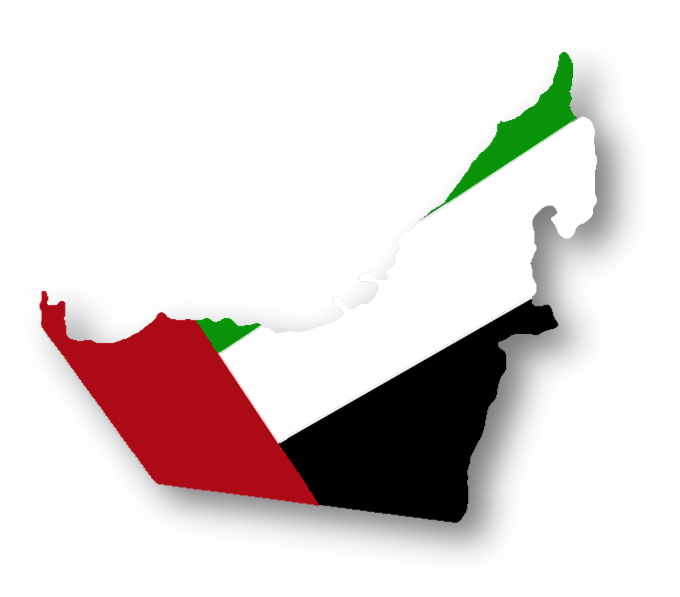
The United Arab Emirates
( ![]() i /juˌnaɪtɪd ˌærəb ˈɛmɪrɨts/, Arabic: دولة الإمارات العربية المتحدة Al Imārāt al ‘Arabīyah al Muttaḥidah), often abbreviated as UAE or shortened to The Emirates (Arabic: الامارات Al Imārāt), is a federation situated in the southeast of the Arabian Peninsula in Southwest Asia on the Persian Gulf, bordering Oman and Saudi Arabia and sharing sea borders with Iraq, Kuwait, Bahrain, Qatar and Iran.
i /juˌnaɪtɪd ˌærəb ˈɛmɪrɨts/, Arabic: دولة الإمارات العربية المتحدة Al Imārāt al ‘Arabīyah al Muttaḥidah), often abbreviated as UAE or shortened to The Emirates (Arabic: الامارات Al Imārāt), is a federation situated in the southeast of the Arabian Peninsula in Southwest Asia on the Persian Gulf, bordering Oman and Saudi Arabia and sharing sea borders with Iraq, Kuwait, Bahrain, Qatar and Iran.
Termed emirates because they are ruled by emirs, they are Abu Dhabi, Ajman, Dubai, Fujairah, Ras al-Khaimah, Sharjah and Umm al-Quwain. The capital is Abu Dhabi, which is also the country's center of political, industrial and cultural activities.[6]
Before 1971, the UAE was known as the Trucial States or Trucial Oman, in reference to a 19th-century truce between the United Kingdom and several Arab Sheikhs. The name Pirate Coast was also used in reference to the area's emirates from the 18th to the early 20th century.[7]
The UAE's political system, based on its 1971 Constitution, is composed of several intricately connected governing bodies. Islam is the official religion, and Arabic is the official language.[8]
Its oil reserves are ranked as the world's sixth-largest[9] and the UAE possesses one of the most-developed economies in West Asia. It is the thirty-fifth-largest economy at market exchange rates, and has a high per capita gross domestic product (GDP), with a nominal per capita GDP of US$47,407 as per the International Monetary Fund (IMF).[10] It is 15th in purchasing power per capita and has a relatively high Human Development Index for the Asian continent, ranking thirty-second globally.[11] The UAE is classified as a high-income developing economy by the IMF.
Although the UAE has a constitution and a president, it is neither a constitutional monarchy nor a republic. It is a federation of seven monarchies, whose rulers retain absolute power within their emirates. The emirs chose one of their number to be the president of the federation, but this does not alter the monarchical character of the government of the emirates. The constitution is concerned solely with the relations between the emirates as members of the federation, and does not prescribe a constitutional system of government.
The UAE is a founding member of the Cooperation Council for the Arab States of the Gulf, and a member state of the Arab League. It is also a member of the United Nations, the Organisation of the Islamic Conference, the OPEC, and the World Trade Organization.
History
Origins

The earliest known human habitation in the UAE dated from 5500 BC. At this early stage, there is proof of interaction with the outside world, particularly with civilizations to the north in Persia. These contacts persisted and became wide-ranging, probably motivated by trade in copper from the Hajar Mountains, which commenced around 3000 BC.[12] Foreign trade,
the recurring motif in the history of this strategic region, flourished
also in later periods, facilitated by the domestication of the camel at the end of the second millennium BC.[13]
By the 1st century AD overland caravan traffic between Syria and cities in southern Iraq began. Also, there was seaborne travel to the important port of Omana (perhaps present-day Umm al-Qaiwain) and then to India. These routes were an alternative to the Red Sea route used by the Romans.[14]
Pearls had been exploited in the area for millennia but at this time
the trade reached new heights. Seafaring was also a mainstay and major
fairs were held at Dibba, bringing in merchants from as far as China.[15]
Advent of Islam
The arrival of envoys from the Islamic prophet Muhammad in 630 heralded the conversion of the region to Islam. After Muhammad, one of the major battles of the Ridda Wars was fought at Dibba resulting in the defeat of the non-Muslims and the triumph of Islam in the Arabian Peninsula.
In 637, Julfar (today Ra's al-Khaimah) was used as a staging post for the conquest of Iran. Over many centuries, Julfar became a wealthy port and pearling center from which dhows travelled throughout the Indian Ocean especially to neighboring land of Sindh and its cities of Thatta and Debal.
Portuguese control
Portuguese expansion into the Indian Ocean in the early 16th century following Vasco da Gama's route of exploration saw them battle Safavid Persia up the coast of the Persian Gulf. The Portuguese controlled the area for 150 years, in which they conquered the inhabitants of the Arabian Peninsula.[16] Vasco da Gama was helped by Ahmad Ibn Majid, a navigator and cartographer from Julfar, to find the spice route from Asia.[17][18]
European domination
During the 16th century, piecemeal, the entire territory of the nation came under the direct influence of the European colonial empires, with the British eventually getting the upper hand. The region was known to the British as the "Pirate Coast", as raiders based there harassed the shipping industry despite both European and Arab navies patrolling the area from the 17th century into the 19th.[19] British expeditions to protect the Indian trade from raiders at Ras al-Khaimah led to campaigns against that headquarters and other harbours along the coast in 1819. The next year, a peace treaty was signed to which all the sheikhs of the coast adhered. Raids continued intermittently until 1835, when the sheikhs agreed not to engage in hostilities at sea. In 1853, they signed a treaty with the British, under which the sheikhs (the "Trucial Sheikhdoms") agreed to a "perpetual maritime truce." It was enforced by the United Kingdom, and disputes among sheikhs were referred to the British for settlement.[20]

Primarily in reaction to the ambitions of other European countries, the United Kingdom and the Trucial Sheikhdoms established closer bonds in an 1892 treaty, similar to treaties entered into by Britain with other Persian Gulf principalities. The sheikhs agreed not to dispose of any territory except to Britain and not to enter into relationships with any foreign government other than the United Kingdom without its consent. In return, the British promised to protect the Trucial Coast from all aggression by sea and to help in case of land attack.[21] British suppression of piracy meant that pearling fleets could operate in relative security. However, the British prohibition of the slave trade meant an important source of income was lost to some sheikhs and merchants.[22]
Pearling industry
During the 19th and early 20th centuries, the pearling industry thrived in the relative calm sea, providing both income and employment to the people of the Persian Gulf. It began to become a good economic resource for the local people. Then the First World War had a severe impact on the pearl fishery, but it was the economic depression of the late 1920s and early 1930s, coupled with the Japanese invention of the cultured pearl, that all but destroyed it. The industry eventually faded away shortly after the Second World War, when the newly independent Government of India imposed heavy taxation on pearls imported from the Arab states of the Persian Gulf.[23]
The decline of pearling resulted in a very difficult era, with little opportunity to build any infrastructure.
Beginning of the oil era
At the beginning of the 1960s, the first oil company teams carried out preliminary surveys and the first cargo of crude was exported from Abu Dhabi in 1962. As oil revenues increased, ruler of Abu Dhabi, Zayed bin Sultan Al Nahyan, undertook a massive construction program, building schools, housing, hospitals and roads. When Dubai’s oil exports commenced in 1969, Rashid bin Saeed Al Maktoum, the de facto ruler of Dubai, was also able to use oil revenues to improve the quality of life of his people.[24]
In 1955, Great Britain sided with Abu Dhabi in the latter's dispute with Oman over the Buraimi Oasis, another territory to the south.[25] A 1974 agreement between Abu Dhabi and Saudi Arabia would have settled the Abu Dhabi-Saudi border dispute; however, the agreement has yet to be ratified by the UAE government and is not recognized by the Saudi government. The border with Oman also remains officially unsettled, but the two governments agreed to delineate the border in May 1999.[26]
In the early 1960s, oil was discovered in Abu Dhabi, an event that led to quick unification calls made by UAE sheikdoms. Zayed bin Sultan Al Nahyan became ruler of Abu Dhabi in 1966 and the British started losing their oil investments and contracts to U.S. oil companies.[27] The British had earlier started a development office that helped in some small developments in the emirates. The sheikhs of the emirates then decided to form a council to coordinate matters between them and took over the development office. They formed the Trucial States Council,[28] and appointed Adi Bitar, Sheikh Rashid bin Saeed Al Maktoum's legal advisor, as Secretary General and Legal Advisor to the Council. The council was terminated once the United Arab Emirates was formed.[29]
In 1968, the United Kingdom announced its decision, reaffirmed in March 1971, to end the treaty relationships with the seven Trucial Sheikhdoms which had been, together with Bahrain and Qatar, under British protection. The nine attempted to form a union of Arab emirates, but by mid-1971 they were still unable to agree on terms of union, even though the British treaty relationship was to expire in December of that year.[30]
Bahrain became independent in August, and Qatar in September 1971. When the British-Trucial Sheikhdoms treaty expired on December 1, 1971, they became fully independent.[31] The rulers of Abu Dhabi and Dubai decided to form a union between their two emirates independently, prepare a constitution, then call the rulers of the other five emirates to a meeting and offer them the opportunity to join. It was also agreed between the two that the constitution be written by December 2, 1971.[32] On that date, at the Dubai Guesthouse Palace, four other emirates agreed to enter into a union called the United Arab Emirates. Ras al-Khaimah joined later, in early 1972.[33][34]
The UAE supported military operations from the United States and other Coalition
nations that are engaged in the war against the Taliban in Afghanistan
(2001) and Saddam Hussein in Iraq (2003) as well as operations
supporting the Global War on Terrorism for the Horn of Africa at Al Dhafra Air Base located outside of Abu Dhabi.[citation needed] The air base also supported Allied operations during the 1991 Persian Gulf War and Operation Northern Watch. The country had already signed a military defense agreement with the U.S. in 1994 and one with France in 1995.[citation needed]
On 2 November 2004, the UAE's first president, Sheikh Zayed bin Sultan Al Nahyan, passed away. His eldest son, Sheikh Khalifa bin Zayed Al Nahyan, succeeded as Emir of Abu Dhabi. In accordance with the constitution, the UAE's Supreme Council of Rulers elected Khalifa as president. Sheikh Mohammad bin Zayed Al Nahyan succeeded Khalifa as Crown Prince of Abu Dhabi.[35] In January 2006, Sheikh Maktoum bin Rashid Al Maktoum, the prime minister of the UAE and the ruler of Dubai, died, and the crown prince Sheikh Mohammed bin Rashid Al Maktoum assumed both roles.
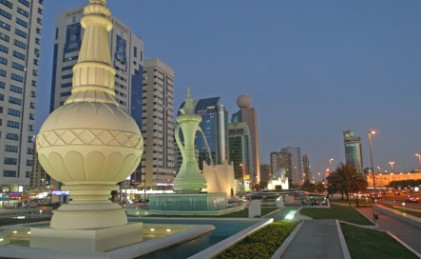 | 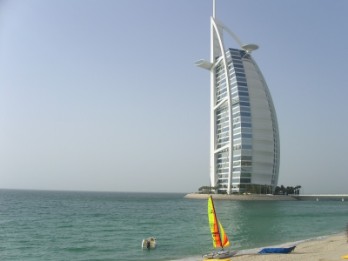 |
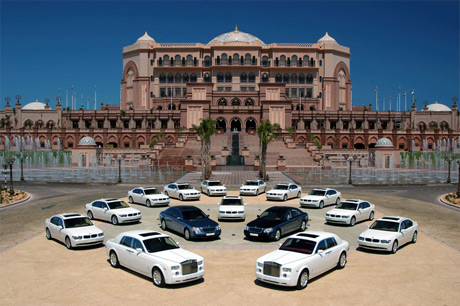 | 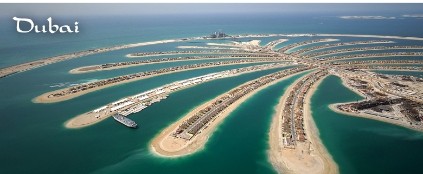 |
